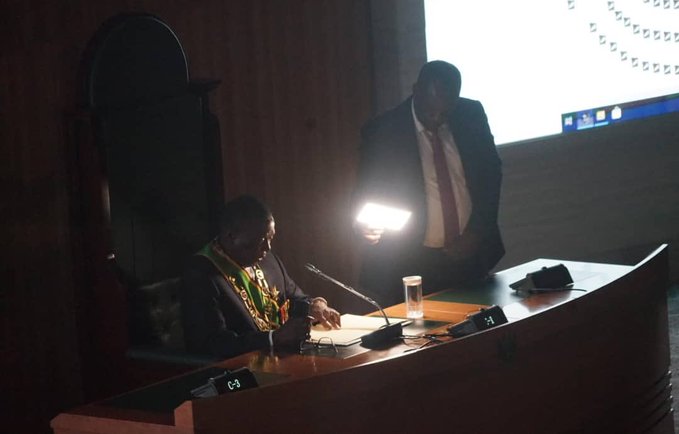Zimbabwe is proposing pension reforms as it seeks to come up with an efficient pension system, according to a draft document compiled by the Insurance and Pension Commission.
This comes amid challenges besetting the industry, including low confidence levels, poor viability of pension funds, low coverage and poor corporate governance.
"In view of the above challenges, the Insurance and Pensions Commission has taken an initiative to propose holistic reforms for the country's pension sector in order to come up with an efficient pension system," said the industry regulatory body.
Broadly, the reform agenda will focus on improving sustainability, affordability, adequacy and coverage of the pension. The reforms are also meant to improve welfare of pensioners, harness long term domestic savings and improve on regulatory framework.
In addition, they are targeted at strengthening the governance, management and efficiency in the delivery of pension services.
Three-tier system
IPEC is proposing that Zimbabwe adopts a three-tier pension system that is meant to improve adequacy and coverage of pension, promote the co-existence of the national pension administered by National Social Security Authority (NSSA) and the private administered occupational schemes as well as enhance collection of contributions.
The three-tier recommendation borrows from the pension reforms adopted in Ghana.
The essence of the first-tier system will be the current compulsory scheme under the administration of NSSA. This is the basic national pension scheme that is mandatory for all formal sector public and private employees.
It is also recommended that the first tier be an available option to the self-employed and informal-sector workers.
It is proposed the tier should operate partially as a defined benefit pay-as-you-go scheme targeting to replace annual incomes of participants to a minimum of 50 percent or an agreed actuarially determined replacement ratio of their pensionable income.
In addition, the tier should guarantee a minimum monthly pension to all pensioners who would have contributed for a minimum number of years. The minimum years of contribution to qualify for the minimum monthly pension should also be actuarially determined.
The first tier should be supported by the Government if funding levels fall below predefined levels.
The proposed second tier of the pension system should be defined contribution pensions schemes that are privately managed and have a component of mandatory contributions up to a certain level for all formally employed workers, who will also be contributing to NSSA.
It is proposed that this mandatory programme is financed by a total minimum contribution of pensionable income shared equally between the employer and employee.
However, individual participating employers are allowed to have higher contributions rates if they have the capacity to do so. The management of second tier should be based on market principles, with fund managers competing.
It is recommended that as defined contribution schemes, this tier should have the option of paying lump-sum benefits (full commutation) calculated on the basis of accumulated contributions plus added interest minus administration fees upon retirement of member.
However, where certain employers desire and can afford to provide defined benefit or hybrid schemes for their employees, this should be permissible and encouraged under the system.
It is further proposed that this second tier should be used as security for mortgage loans in respect of residential property acquisition by fund members. This will enable members of the fund to be house owners before they get to retirement.
The proposed third tier is meant to be voluntary. It should be able to cater for the informal sector and even those in the formal sector requiring supplementary retirement income over and above what can accrue from the first and second tiers.
It is proposed under tier three that contributors are allowed to withdraw from their accumulated credits in the event of being unemployed for more than six months after having contributed for at least three years. The tier also provides the option to withdraw at least one third of the contributions accumulated after every five-year period.
The proposed access to contributions are meant to make pensions relevant to the needs of the contributors and also boost confidence within the industry.
"Going forward, the Government, through IPEC, is looking at major reforms, which include a three-tier competitive pension industry that gravitates towards consolidation of pension funds.
It is envisaged that the reforms will result in a transparent and efficient pension system. Resultantly, funds will be relatively large enough to enable the realisation of economies of scale, enhancing national long-term savings' mobilisation efforts and the role of the pension industry in development finance.
"Ultimately, the envisaged pension proposed reforms will go a long way in reducing administrative expenses, thus unlocking value for pension fund members," said IPEC.
- zimpapers
 Zimbabwe announces strict enforcement of axle load limits
Zimbabwe announces strict enforcement of axle load limits  SA decry 'non-existent' Beitbridge border post security
SA decry 'non-existent' Beitbridge border post security  Millions celebrate Diwali festival in India
Millions celebrate Diwali festival in India  Zimbabwe's dollar stock exchange surges 45%
Zimbabwe's dollar stock exchange surges 45%  Gold edges up as traders await guidance
Gold edges up as traders await guidance  Karo Platinum Project capex rises to US$546m
Karo Platinum Project capex rises to US$546m  Young Investment Professional (YIP) Graduate Programme 2019
Young Investment Professional (YIP) Graduate Programme 2019 









 Young Investment Professional (YIP) Graduate Programme 2019
Young Investment Professional (YIP) Graduate Programme 2019
Editor's Pick